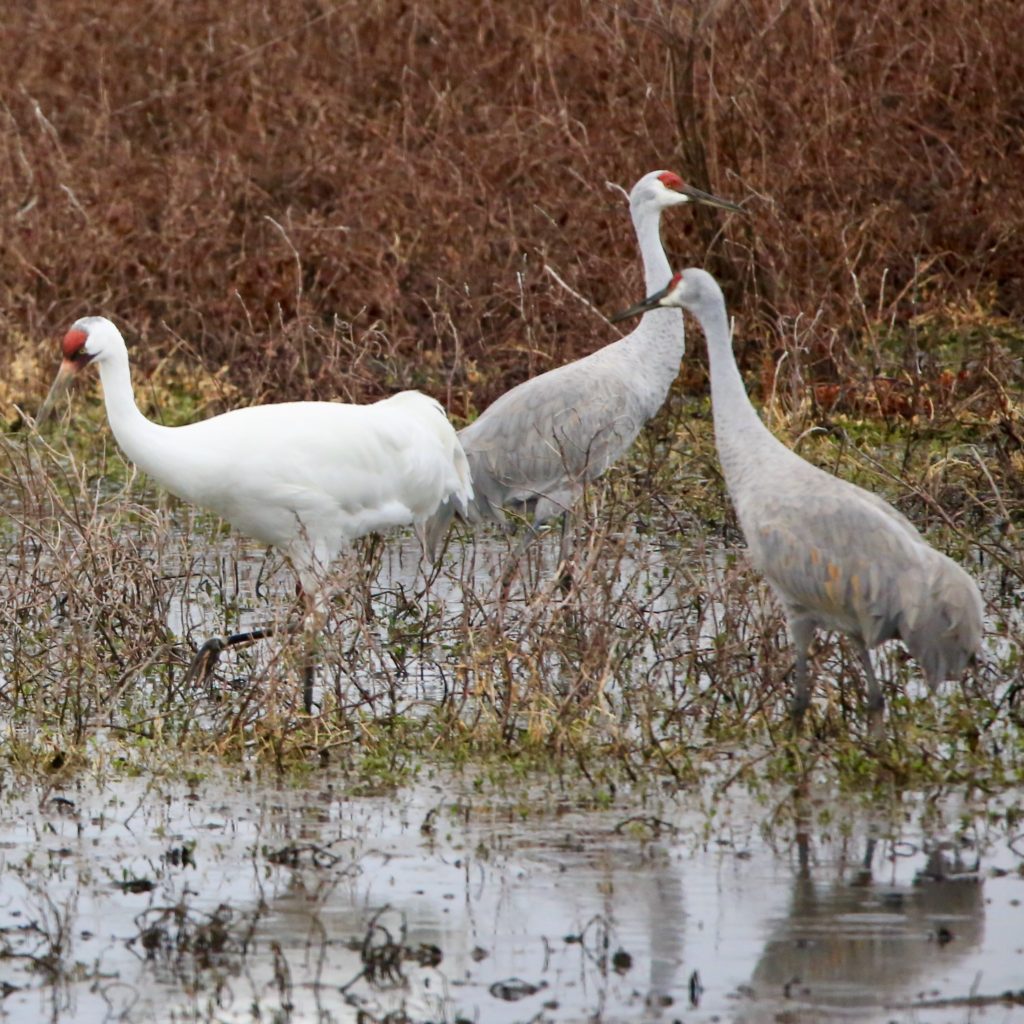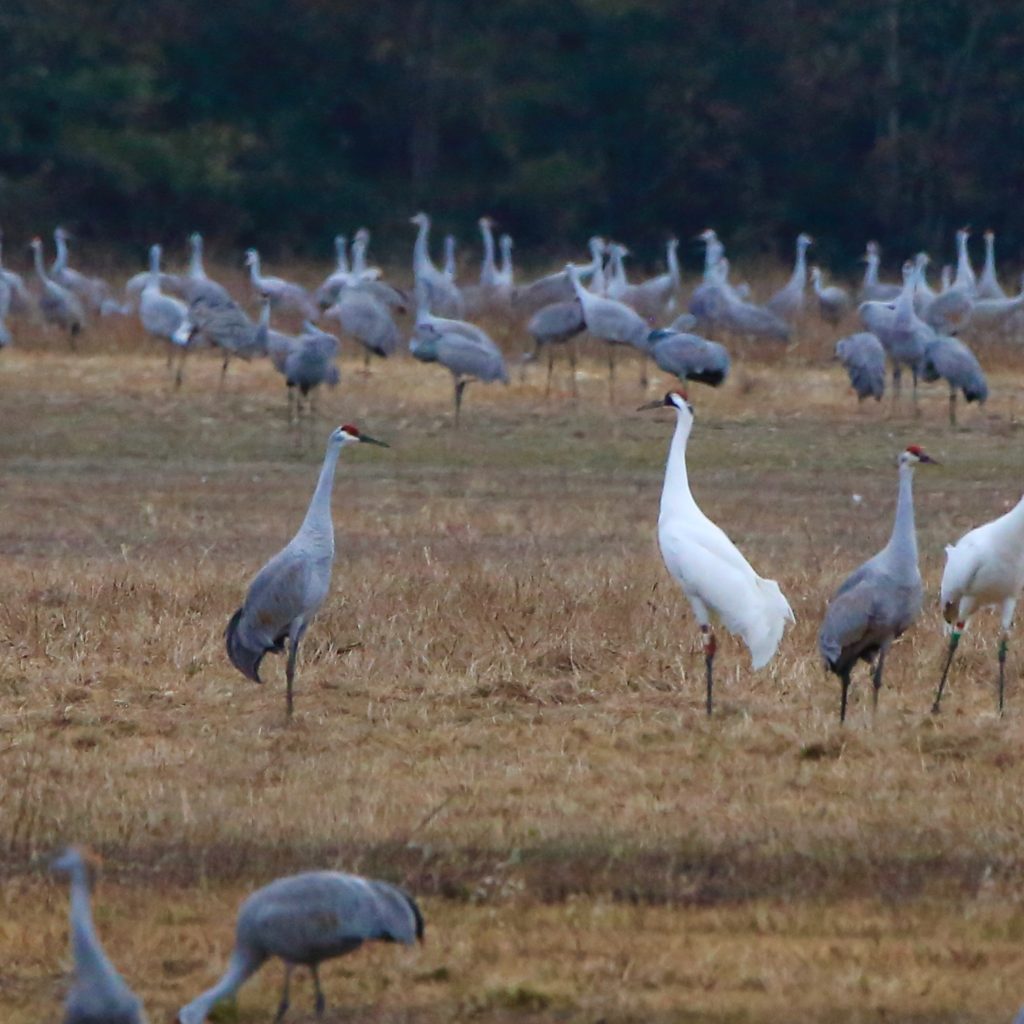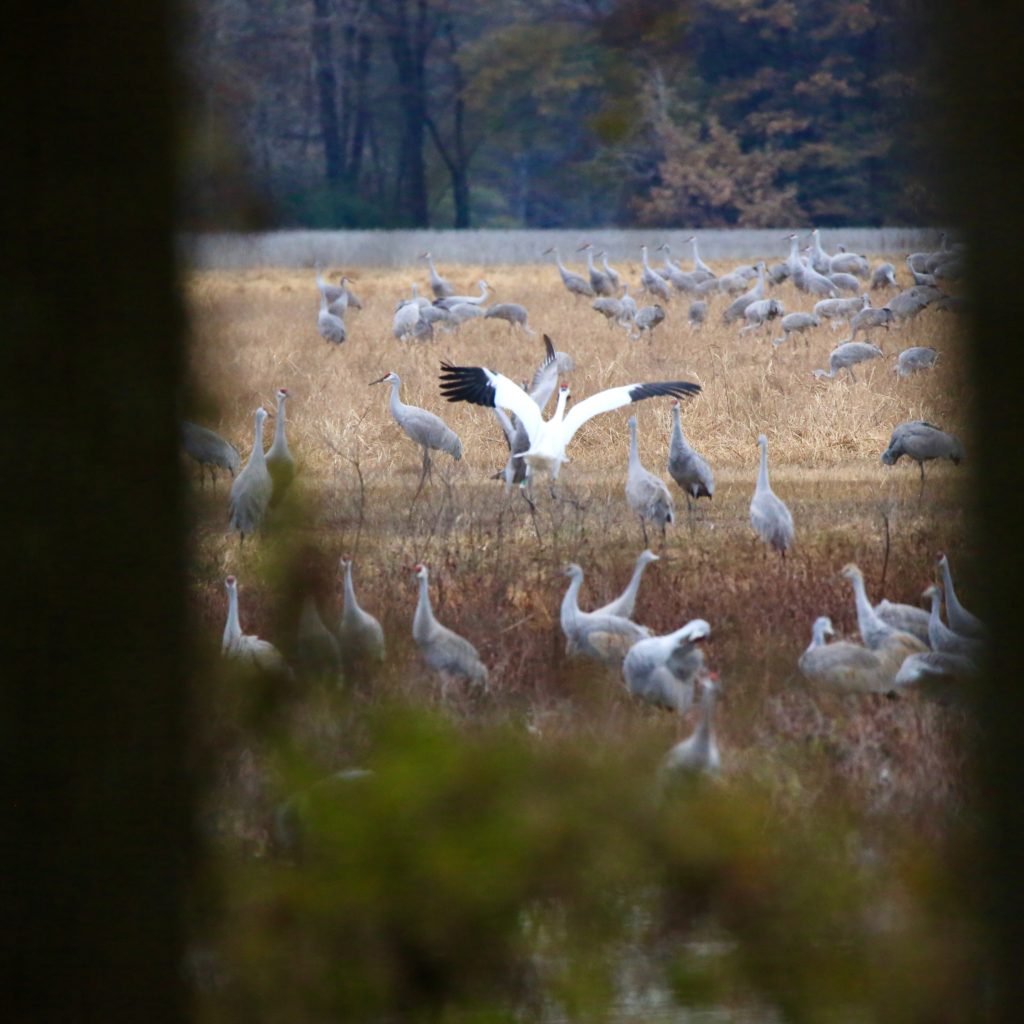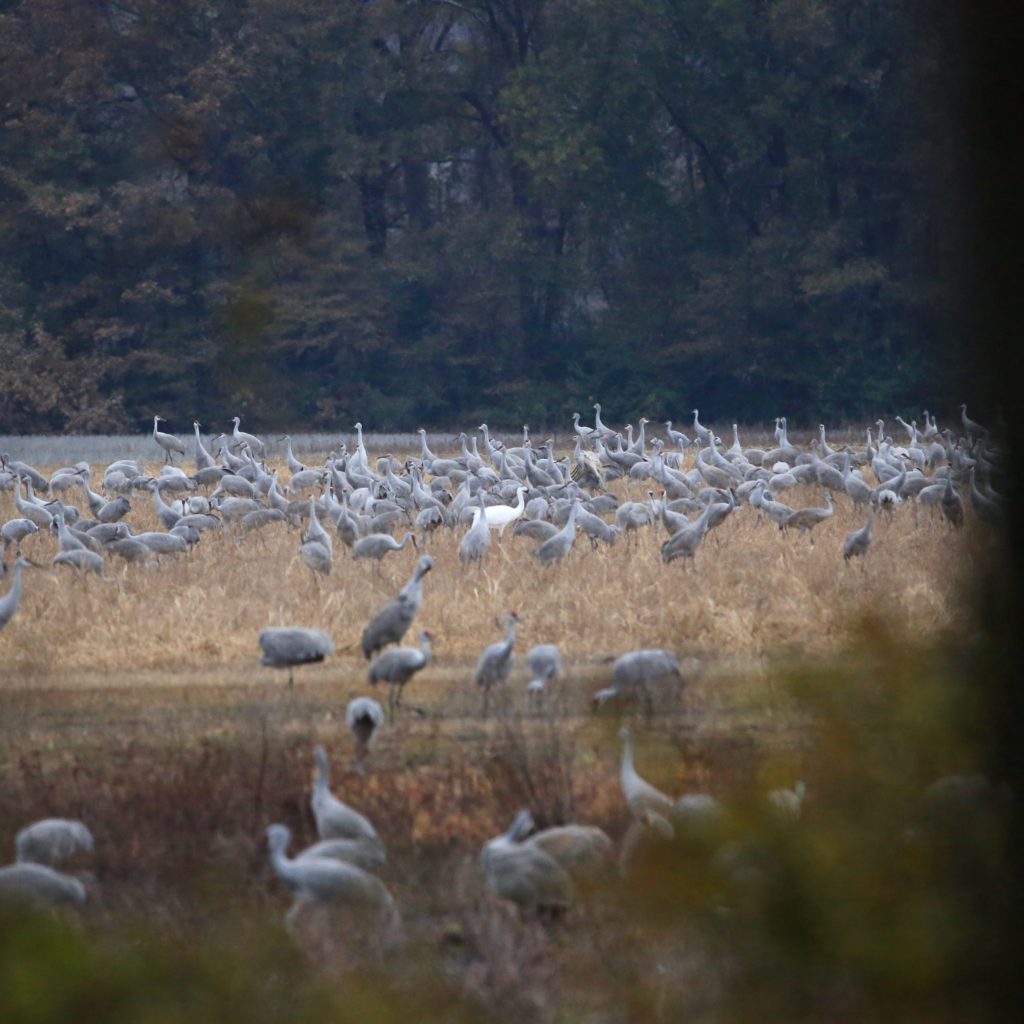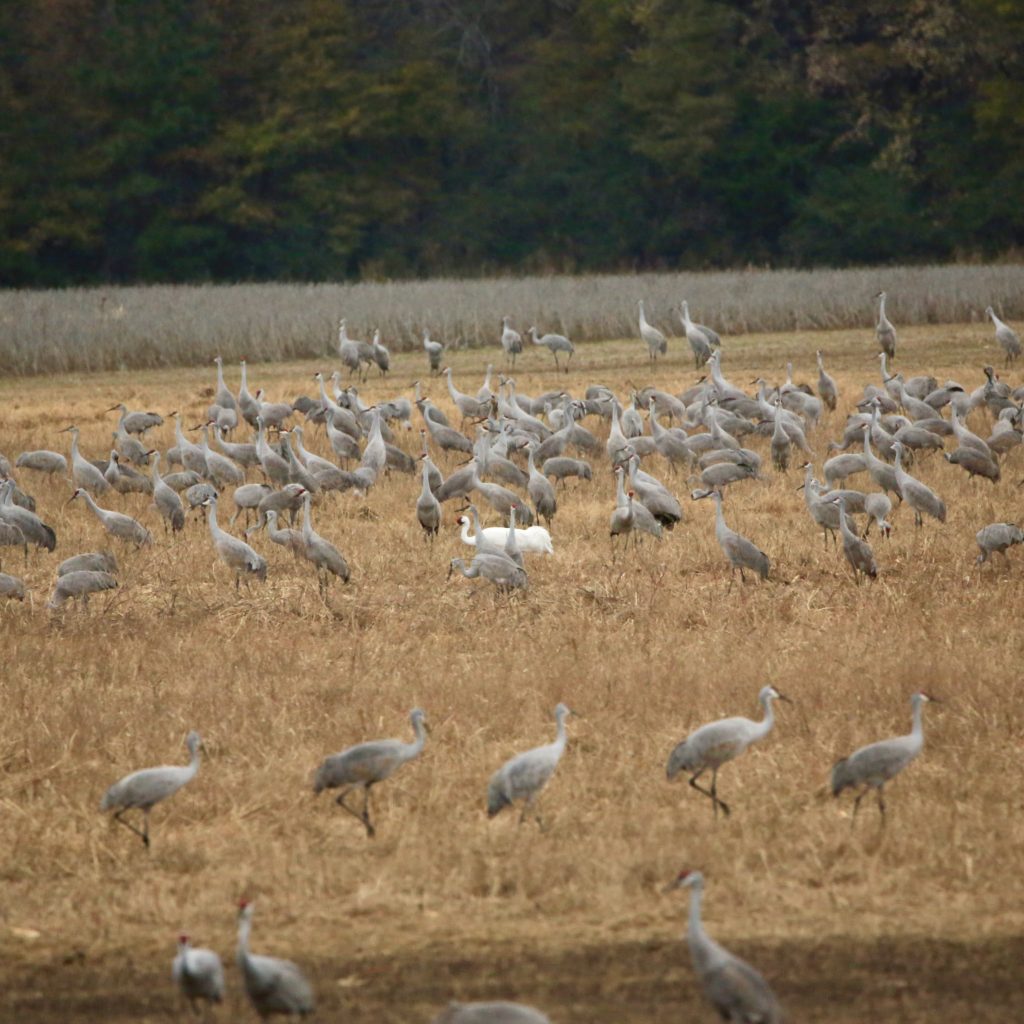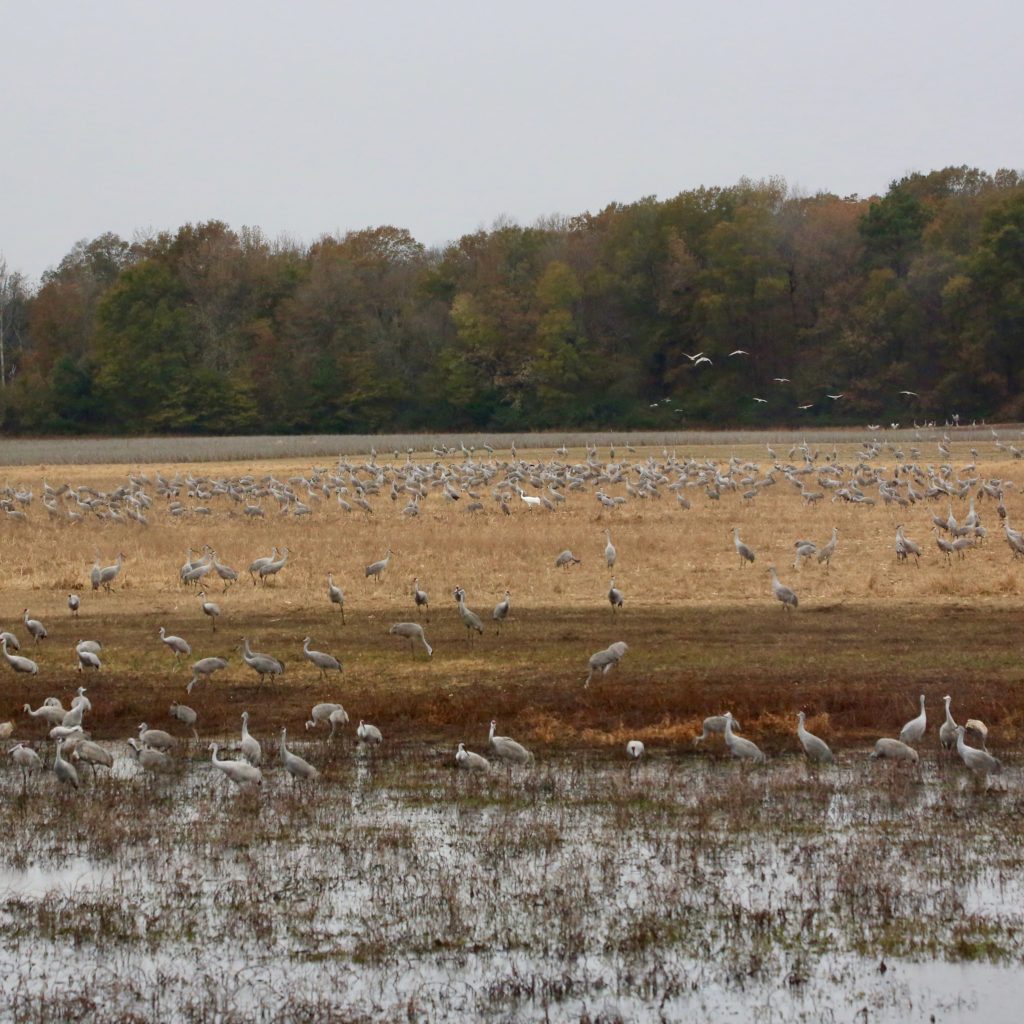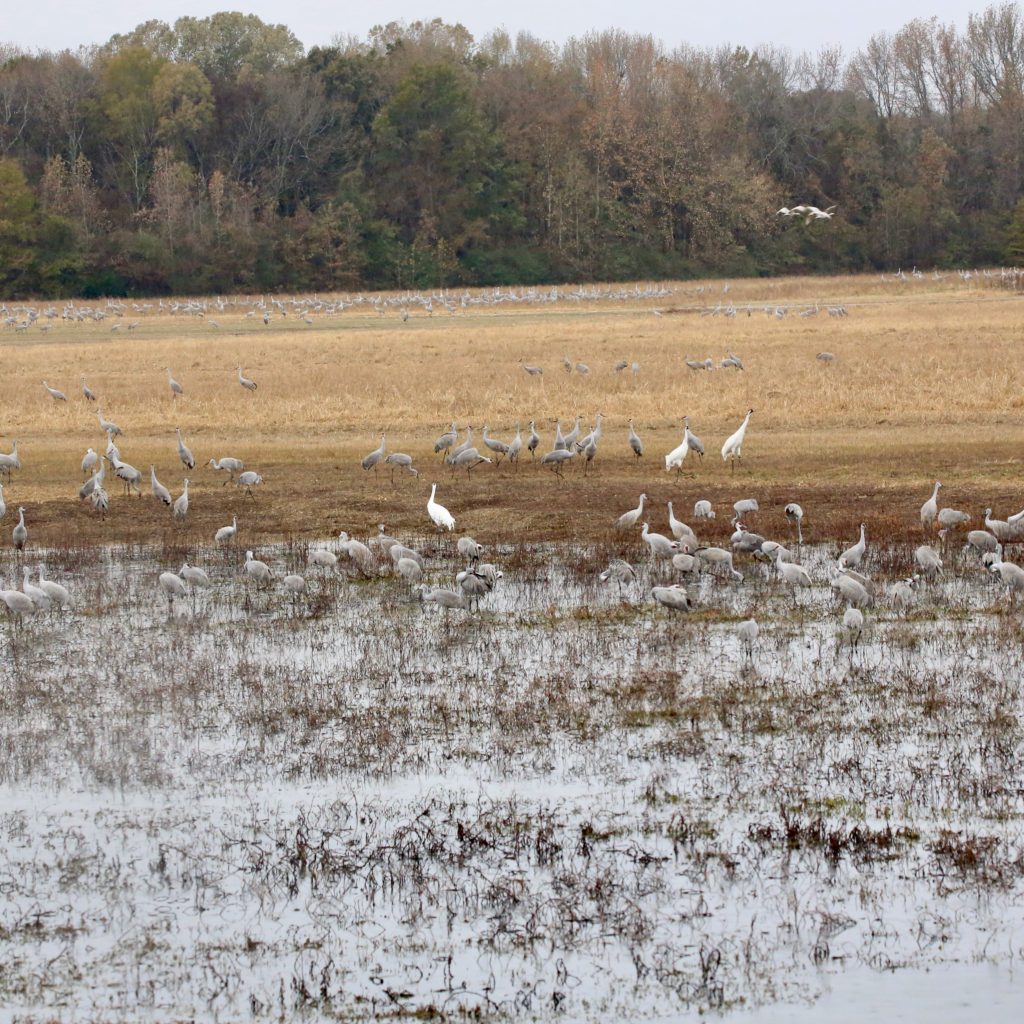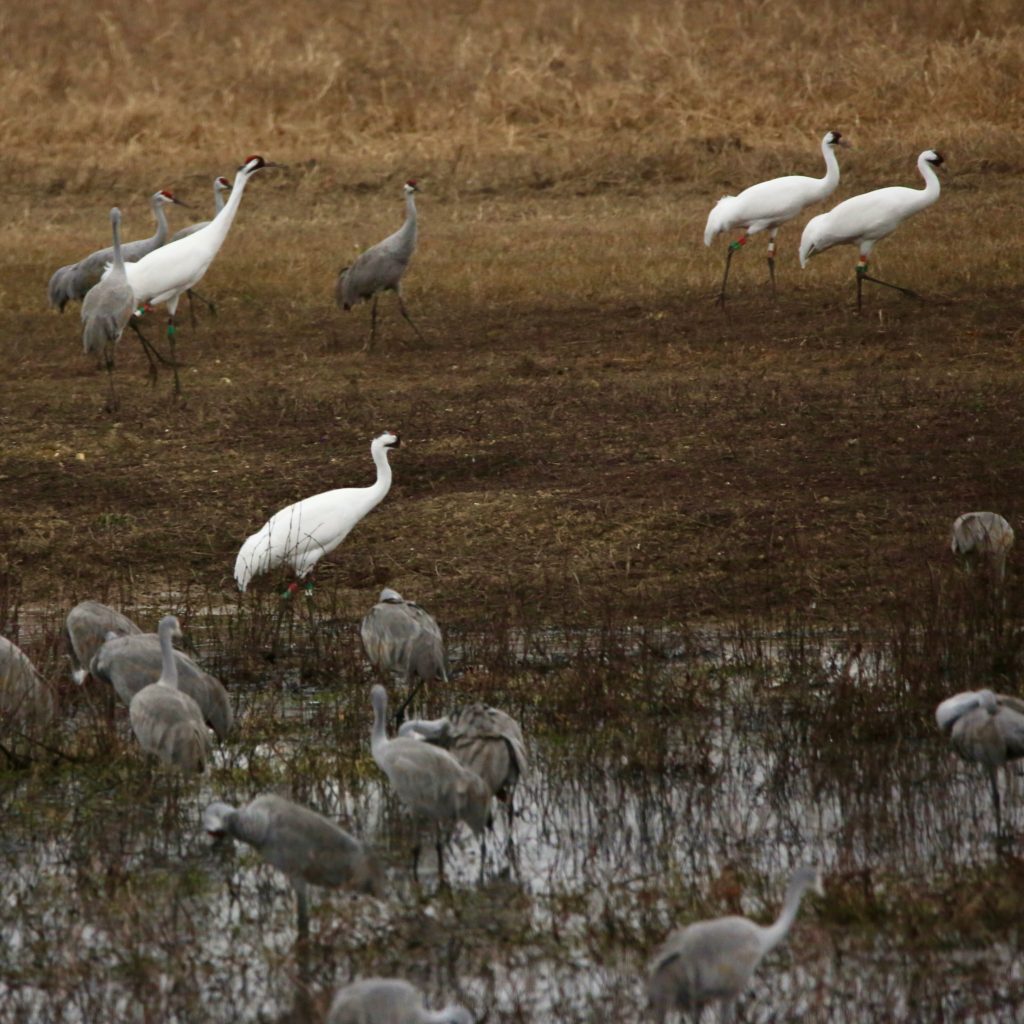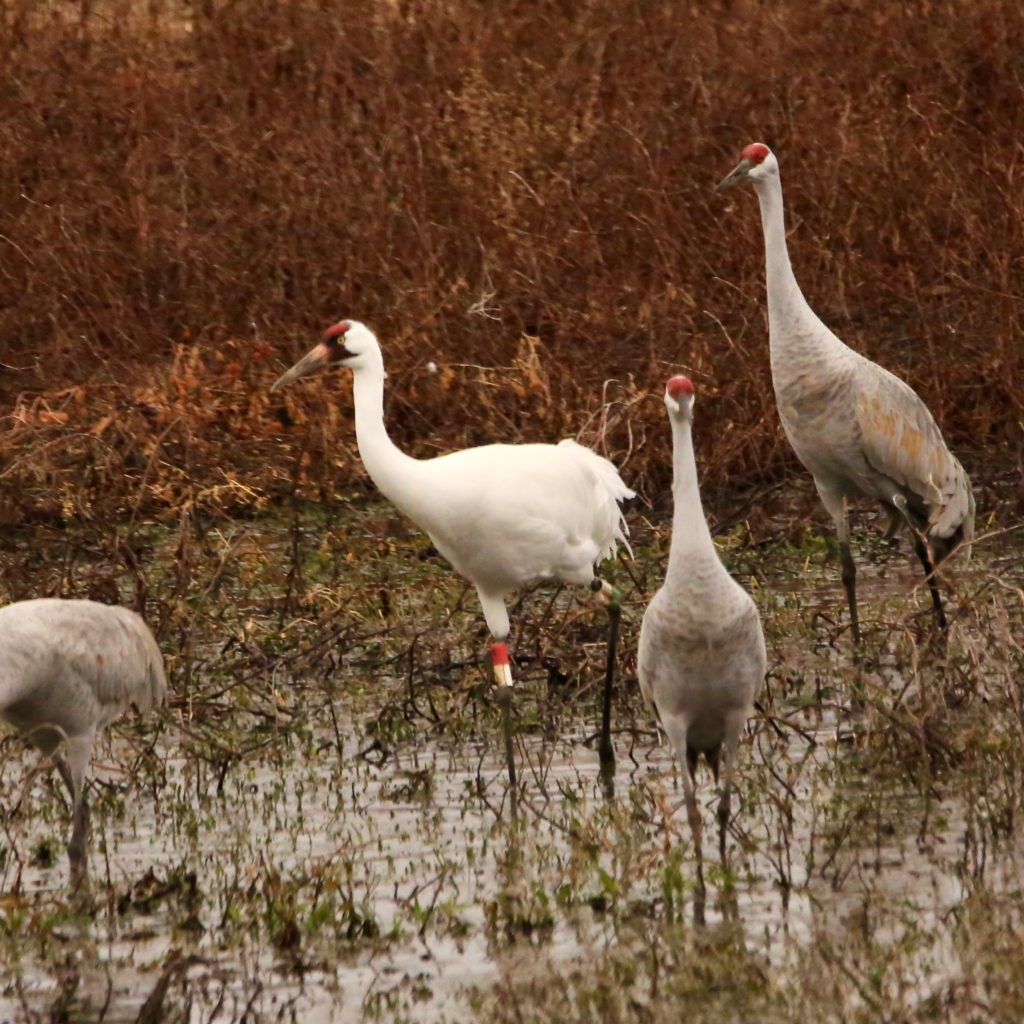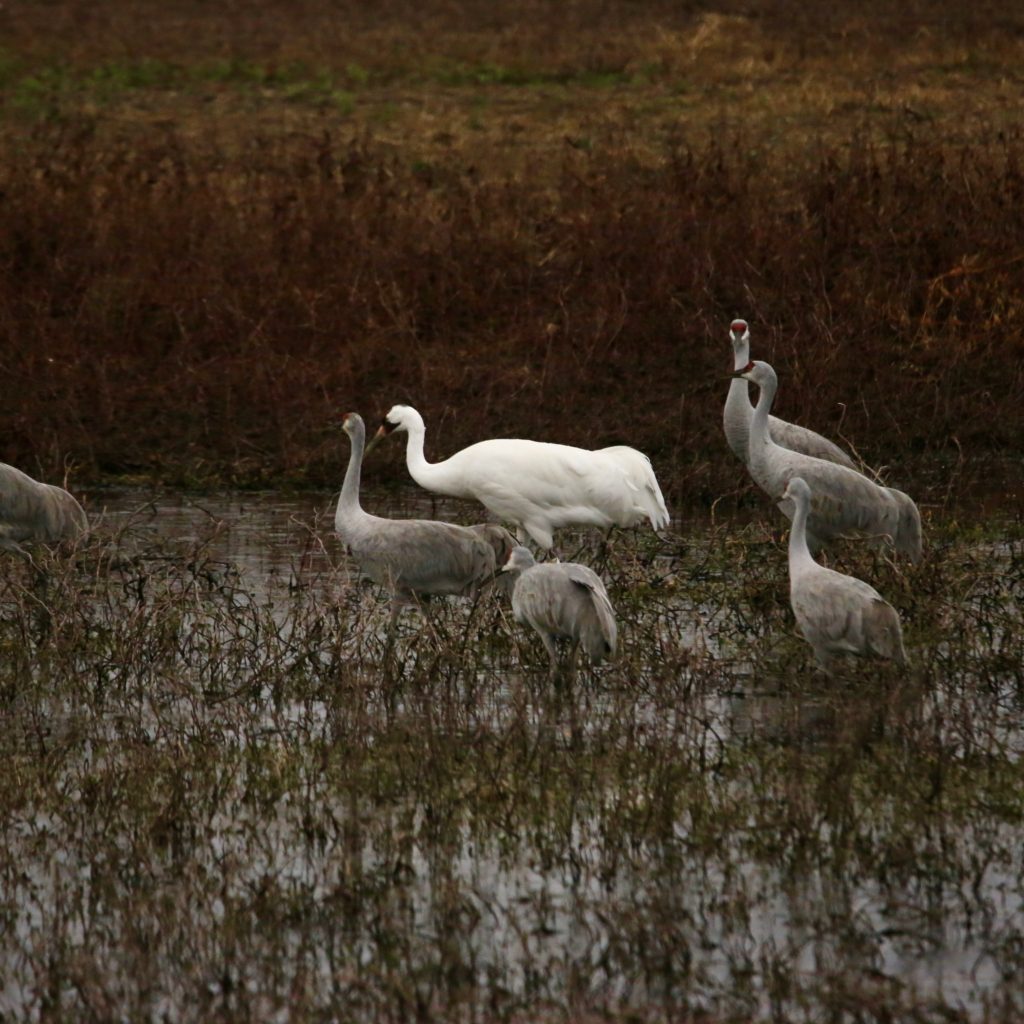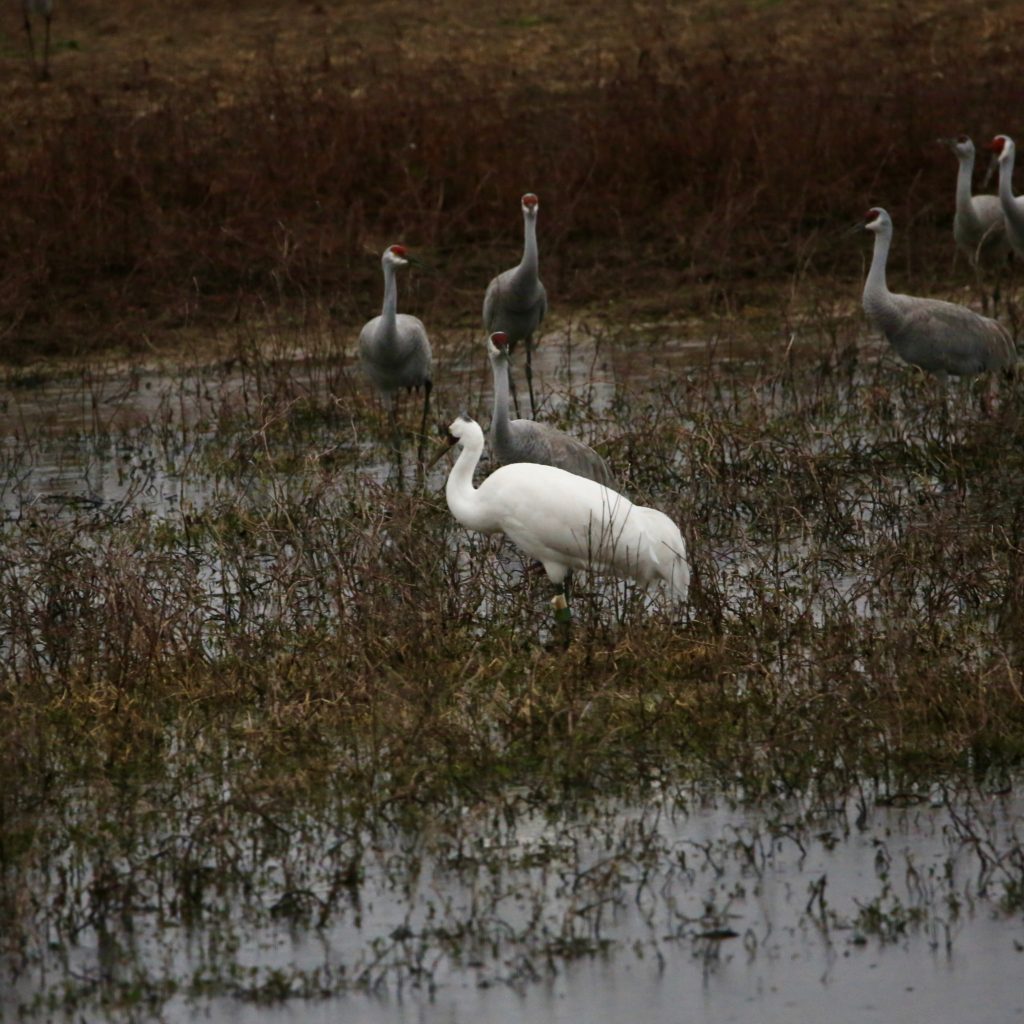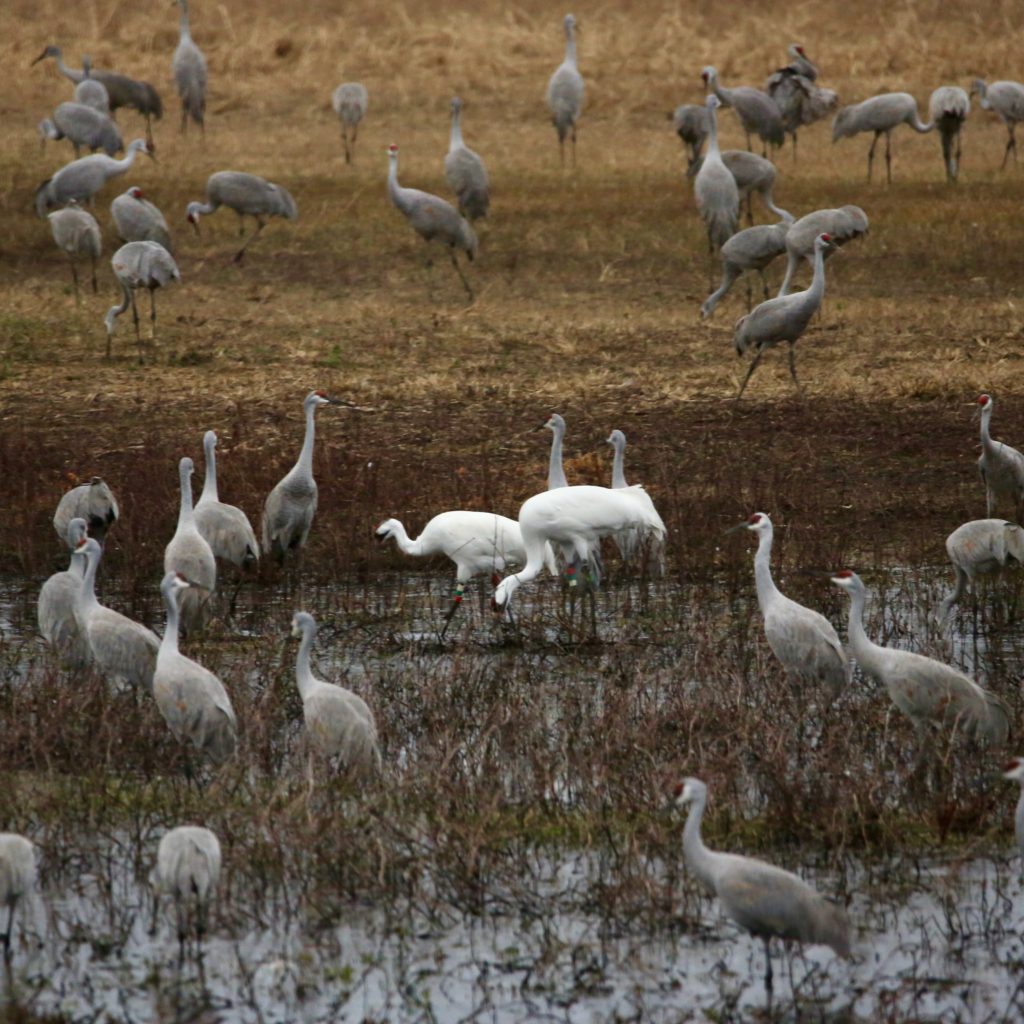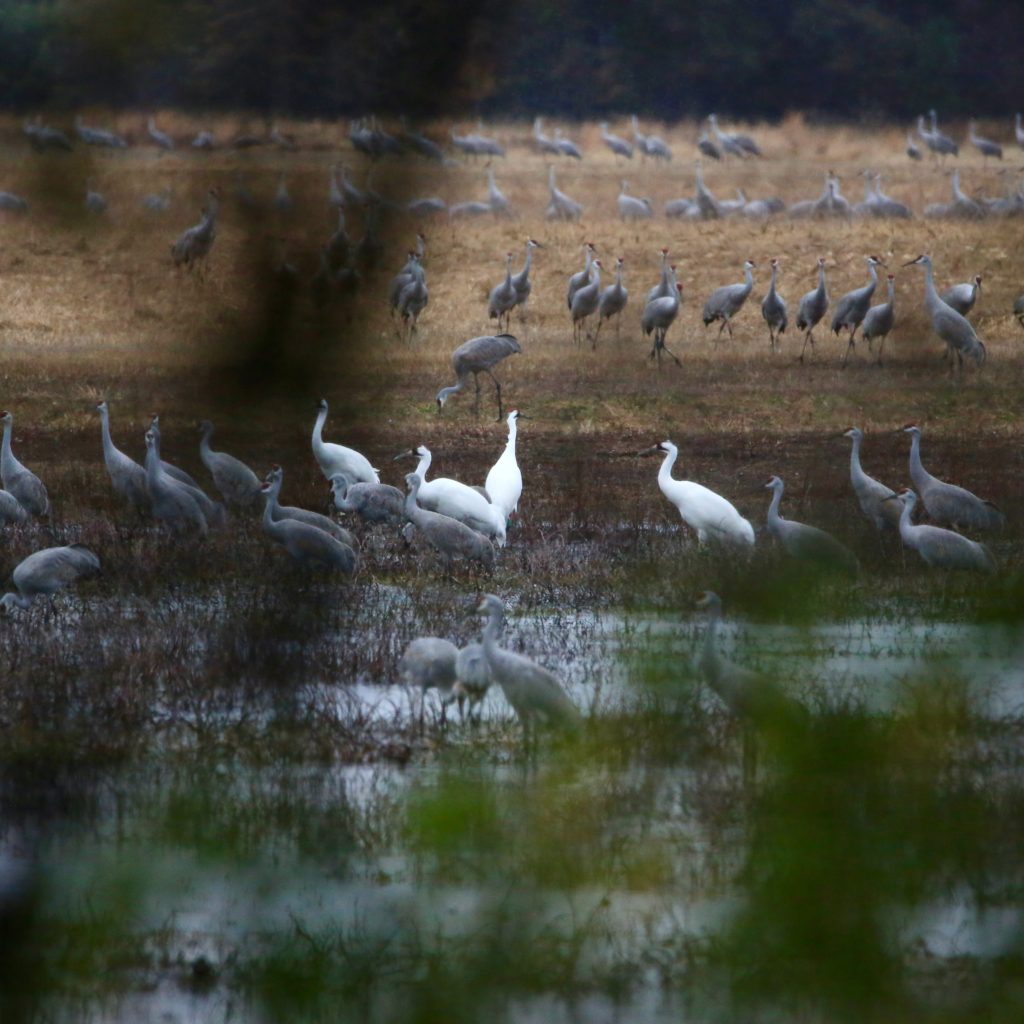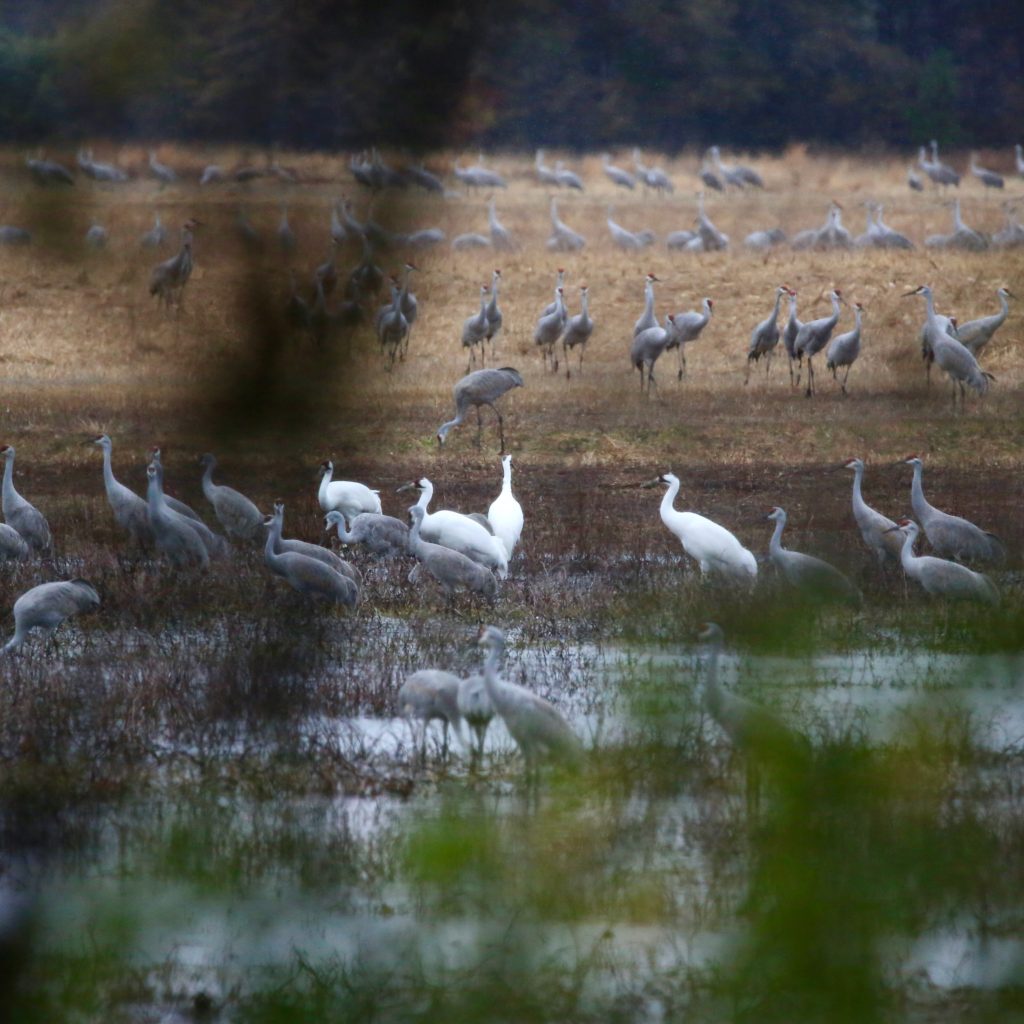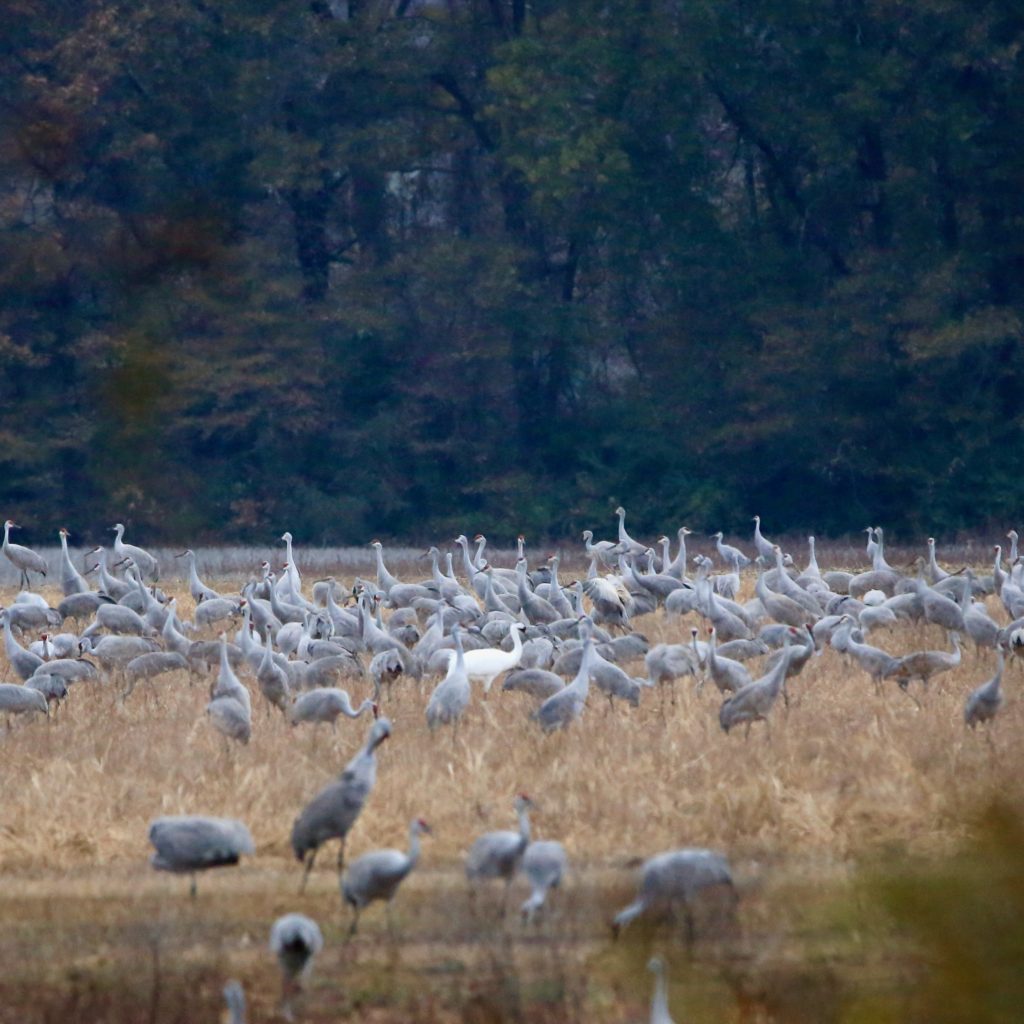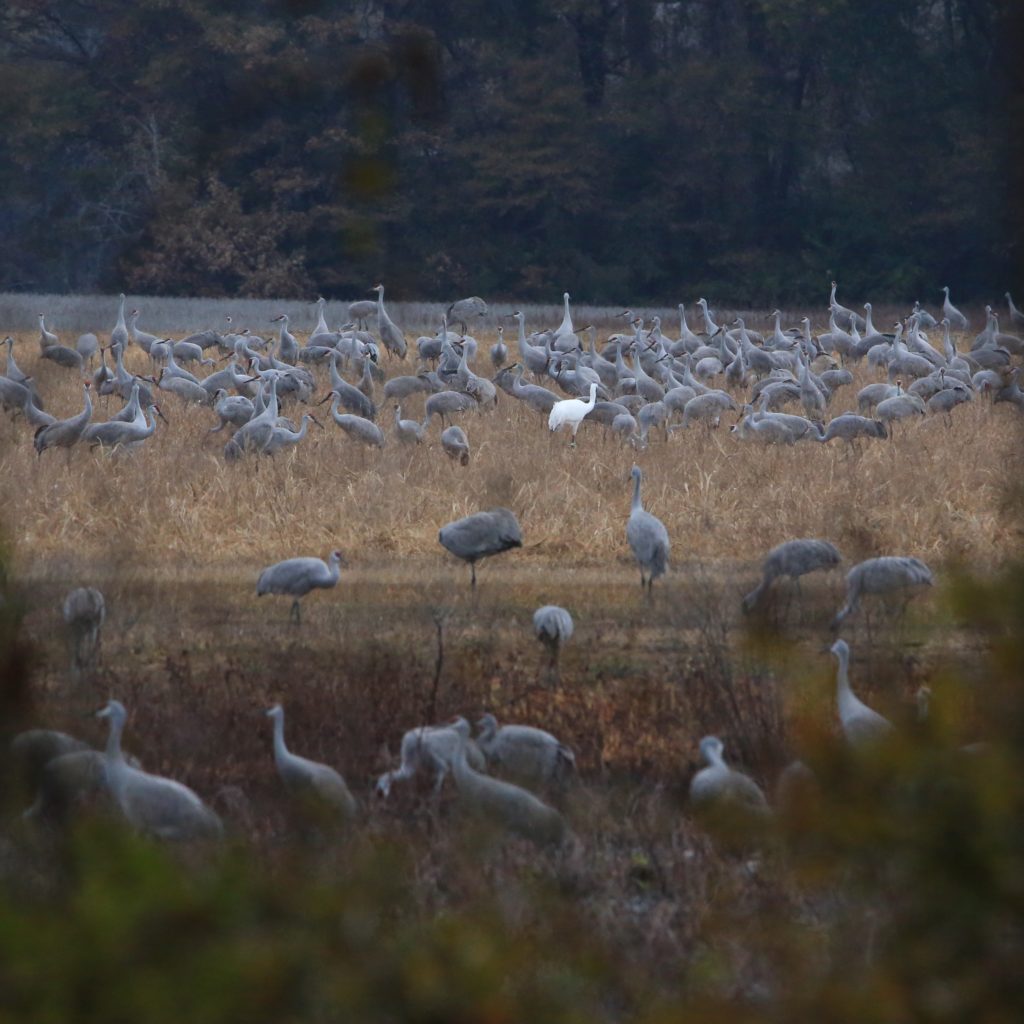
Whooping Crane
A Whooping Crane is a fun bird to see while bird watching. Below are some tips to help you identify Whooping Cranes. We have also put together a list of fun Whooping Crane t-shirts, Whooping Crane bird patches, bird houses, bird feeders, binoculars, stickers and other fun bird watching items.
About Whooping Cranes
The Whooping Crane, named so after its characteristic whooping sound, is the tallest North American bird and one of the only two species of cranes found in North America.
Description and Identification
These are magnificent large, tall birds with a remarkably long and slender neck. Their body widens to make them look plump at the tail. They have long legs. During the flight, their wings broad and their necks are extended straight. The adults are bright white birds, often with a red marking on the heads. Their legs, heads, and wingtips are black. The juveniles look quite different from the adults, as they have whitish underparts and mottled brownish rusty colors on top.
Whooping Crane Size
Males: Weight: 7.3 kilograms, Wingspan: 2.3 meters
Females: Weight: 6.2 kilograms, Wingspan: 2.3 meters
Both the male and the female in this species can stand up to 1.5 meters tall.
Whooping Crane Appearance
The adult birds are white with red crowns and have a long, dark, pointed bill. As they fly, the cranes position their legs straight backward and angle their necks forward in such a way that they appear straight and streamlined.
All adult cranes have black wing tips that are clearly visible during flight.
The young cranes are cinnamon brown and have fluffed feathers.
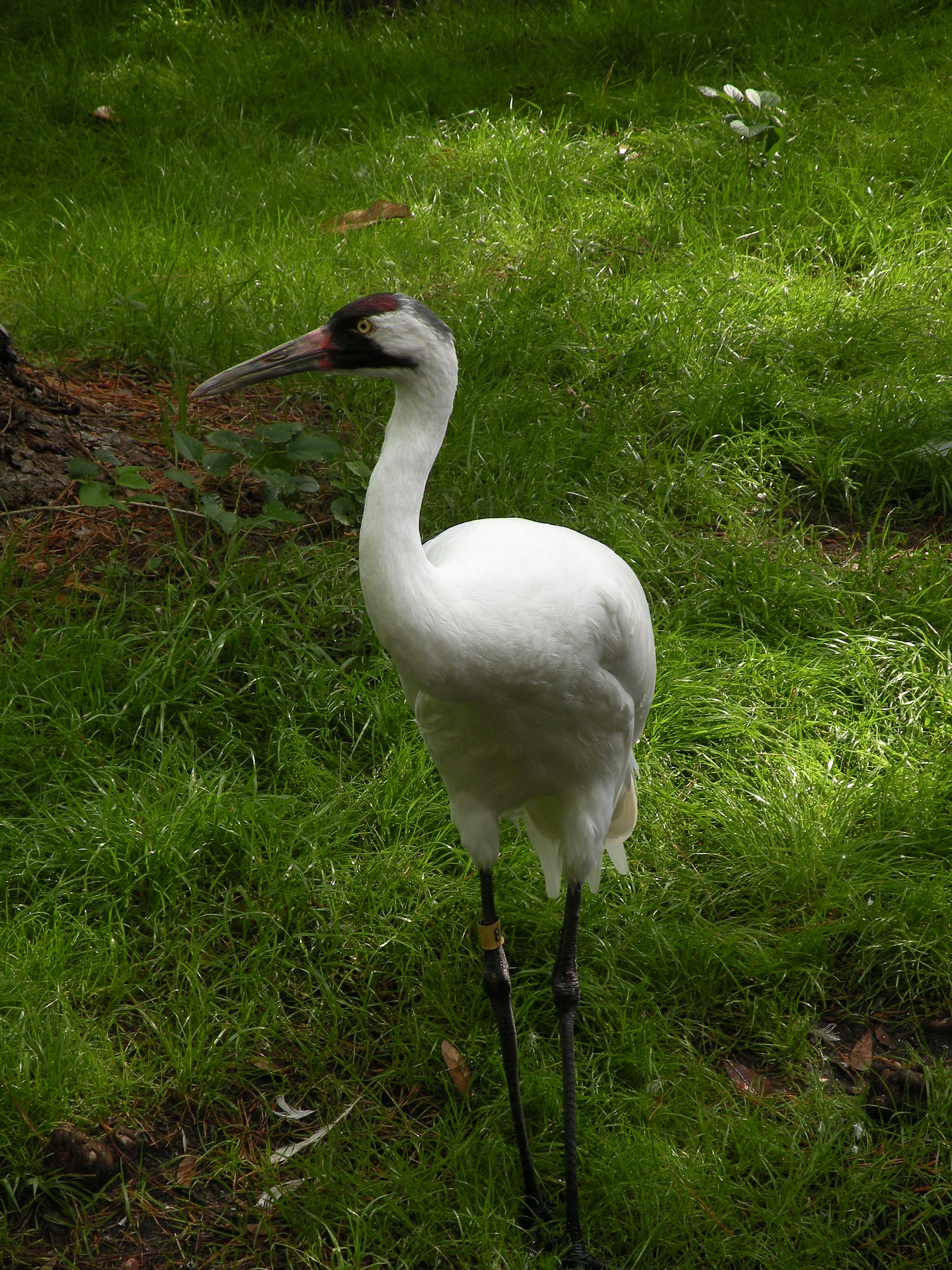
Whooping Crane Feeding
Whooping Cranes move at a stately pace, browsing for food rather than hunting. These birds forage for food in shallow waters, using their long slender bills to poke about and catch prey. They are omnivores but are more inclined towards animal matter than other birds. During winters, they might feed on small crustaceans, mollusks, fish, small reptiles and aquatic plants. In the summer, they enjoy small rodents, small birds, frogs, fish, clams, snails and berries. Many scientific studies have shown that blue crabs are a significant food source. For migrating whooping cranes, waste grain including wheat, barley and corn can provide a great amount of energy.
They are omnivorous and lean more towards animal material than other regular cranes. They move around shallow waters probing with their bills and pick out small fish, eels, small reptiles, crustaceans, rodents, and other small easily obtainable food.
Their main choice of food is the blue crab. Whooping cranes cannot digest grains as efficiently as the Sandhill cranes and also cannot swallow gizzard stones.
Whooping Crane Habitat
They are usually spotted in small flocks near shallow, grassy wetlands that are interspersed with grasslands or scattered evergreens. They might also be spotted occasionally at crop fields. The best places to view Whooping Cranes are Aransas National Wildlife Refuge in Texas, Wood Buffalo National Park in Canada, Nebraska’s Platte River and Sandhill Cranes. Whooping Cranes have a strong homing instinct, limiting their spread to newer habitats.
Since these cranes are almost extinct, many of them are located in reserves and controlled habitats in different parts of the world. They can be found in Canada, Wisconsin, Texas, Portland, Oklahoma and some parts of North America.
They are naturally migratory and mainly settle in places that are near water bodies.
Range and Migration
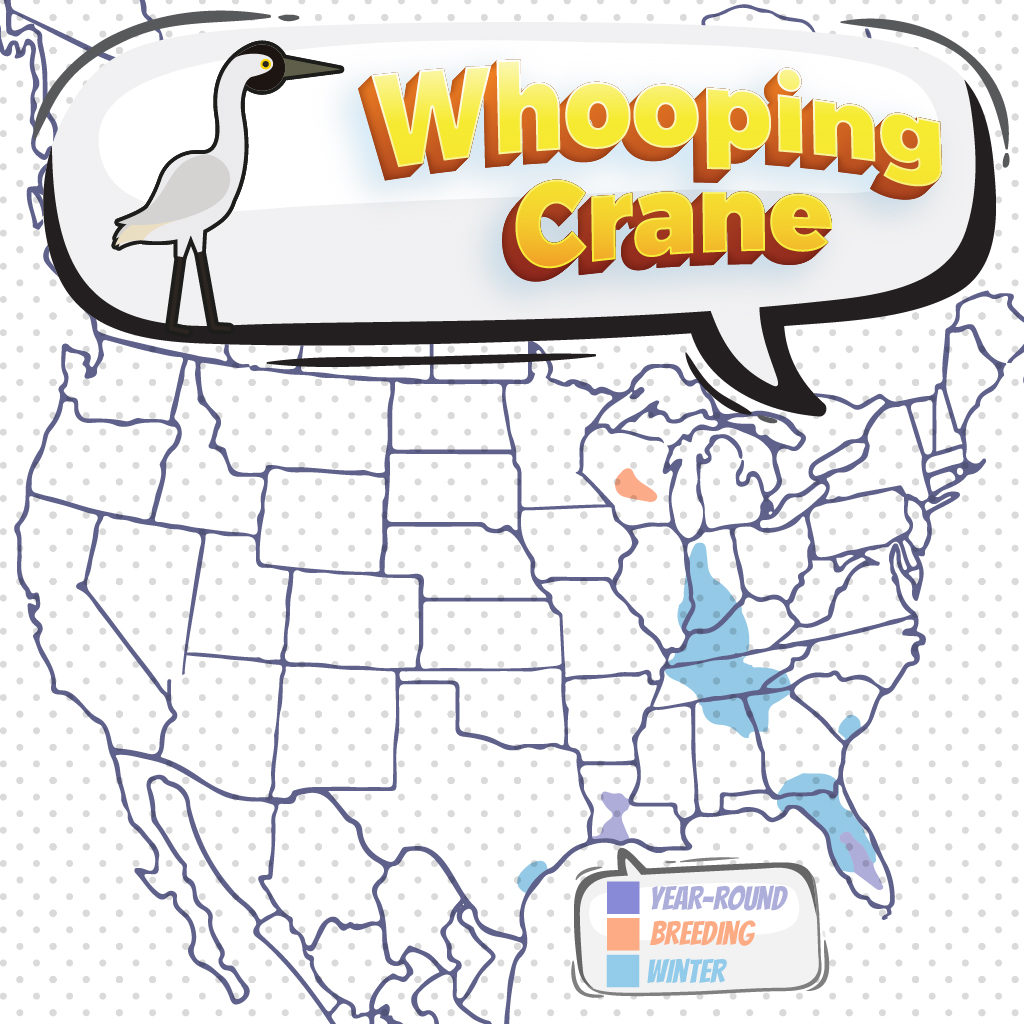
Whooping Crane was threatened with near extinction in 1940, after which careful and considerable effort has led to a steady increase in their numbers. As of today, their numbers are approximately 800. They are either permanent residents of their region or are medium-distance migrants. One population migrates from Canada to Texas on their own. While migrating, they stop at wide shallow river flats. They spend their winters in coastal marshes and estuaries. The Wisconsin-Florida population migrates with the help of ultralight aircraft, whereas Florida and Louisiana populations are nonmigratory.
Nesting
Both sexes of Whooping Cranes contribute to the nest-building activities. Their nests are quite large and measure between two to five feet in width. They have a flat surface, made out of vegetation such as bulrushes, sedges, and cattails. They are built in shallow waters in marshes, sloughs, and lake margins. They are frequently built on small islands. Their clutch size is usually between one to three light brown eggs with olive spots and patches. They are monogamous, and form bonds that last for 2-3 years. Their courting ritual includes an elaborate extravagant dance. The territories of paired Whooping Cranes are usually protected by the males.
Whooping Crane Life and Behavior
They are not solitary birds. They live in flocks that are usually made up of several mating pairs. Before migration, one of the pairs of mates flies ahead to scout the new land and then later flies back to its mate and their nestlings to “report its findings”.
The cranes have a loud whooping call that can be heard over miles. Each crane has its own unique frequency and mates can identify each other’s calls over long distances.
Ornithology
Bird Watching Academy & Camp Subscription Boxes
At Bird Watching Academy & Camp we help kids, youth, and adults get excited and involved in bird watching. We have several monthly subscription boxes that you can subscribe to. Our monthly subscription boxes help kids, youth, and adults learn about birds, bird watching, and bird conservation.
Bird Watching Binoculars for Identifying Whooping Cranes
The most common types of bird watching binoculars for viewing Whooping Cranes are 8×21 binoculars and 10×42 binoculars. Bird Watching Academy & Camp sells really nice 8×21 binoculars and 10×42 binoculars. You can view and purchase them here.
Whooping Crane T-shirts
If you love the Whooping Crane you should purchase a Bird Watching Academy & Camp T-shirt. To help support bird conservation we donate 10 percent to bird conservation activities.
Whooping Crane Iron On Patches
Kids, Youth, and Adults love to collect our Bird Watching Academy & Camp iron on patches. Our bird watching patches help you keep track of the birds you have seen an identified. You can also display the patches on our Bird Watching Academy & Camp banners.
The Whooping Crane is a great iron on patch to start your collection with. The patches are durable and can be sewn on or ironed on to just about anything.
Whooping Crane Stickers
Stickers are a great way for you to display your love for bird watching and the Whooping Crane. We sell a monthly subscription sticker pack. The sticker packs have 12 bird stickers. These sticker packs will help your kids learn new birds every month.
Bird Feeders For Whooping Crane
There are many types of bird feeders. Here are our favorite bird feeders for your backyard. We use all of these bird feeders currently. Kids will have a great time watching birds eat at these bird feeders. Using this collection of bird feeders will provide a wide variety and many types of birds.
Best Bird Houses for Whooping Crane
There are many types of bird houses. Building a bird house is always fun but can be frustrating. These 4 bird houses have become our favorites. Getting a bird house for kids to watch birds grow is always fun. We spent a little extra money on these bird houses but they have been worth the higher price and look great.


